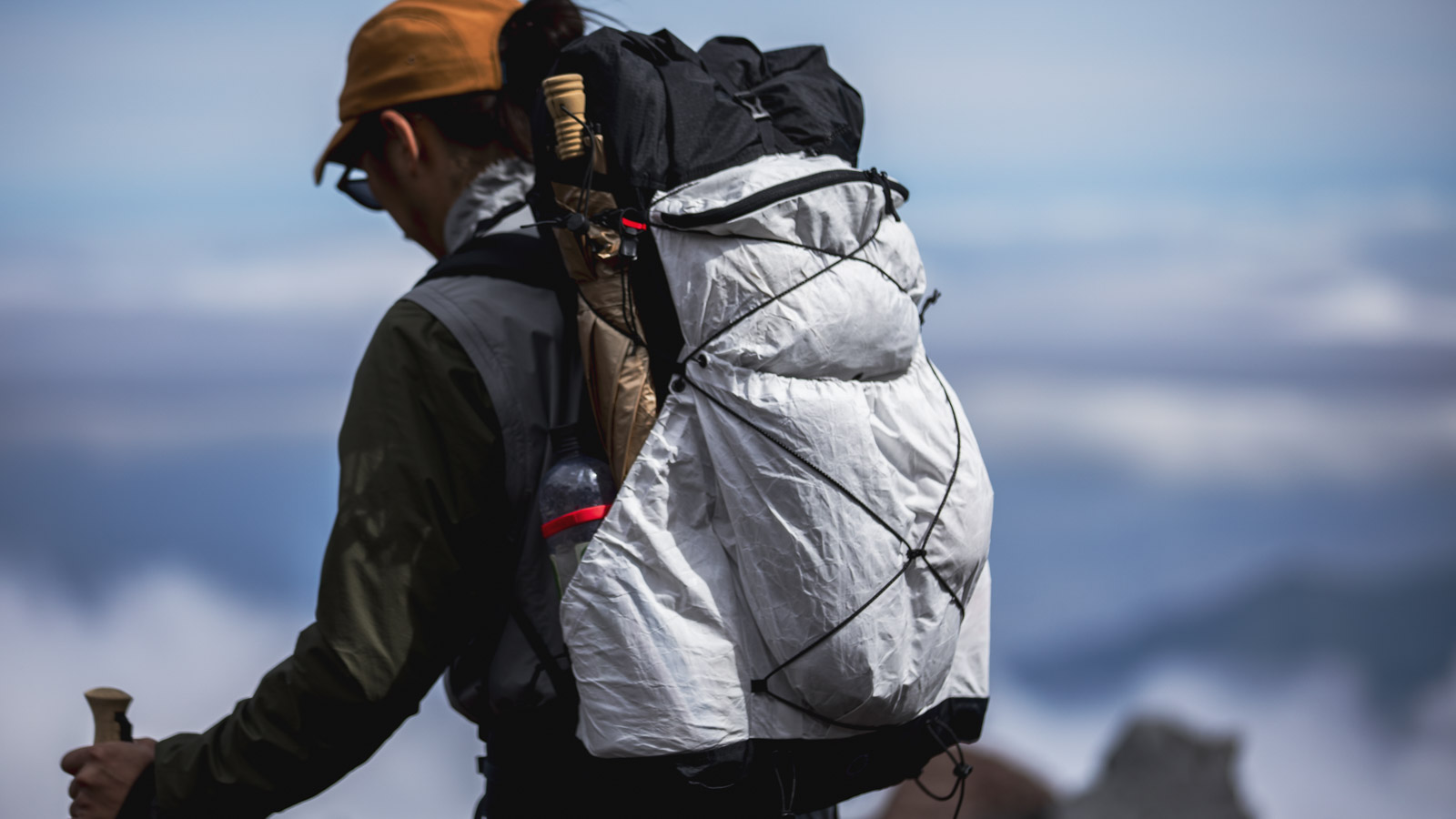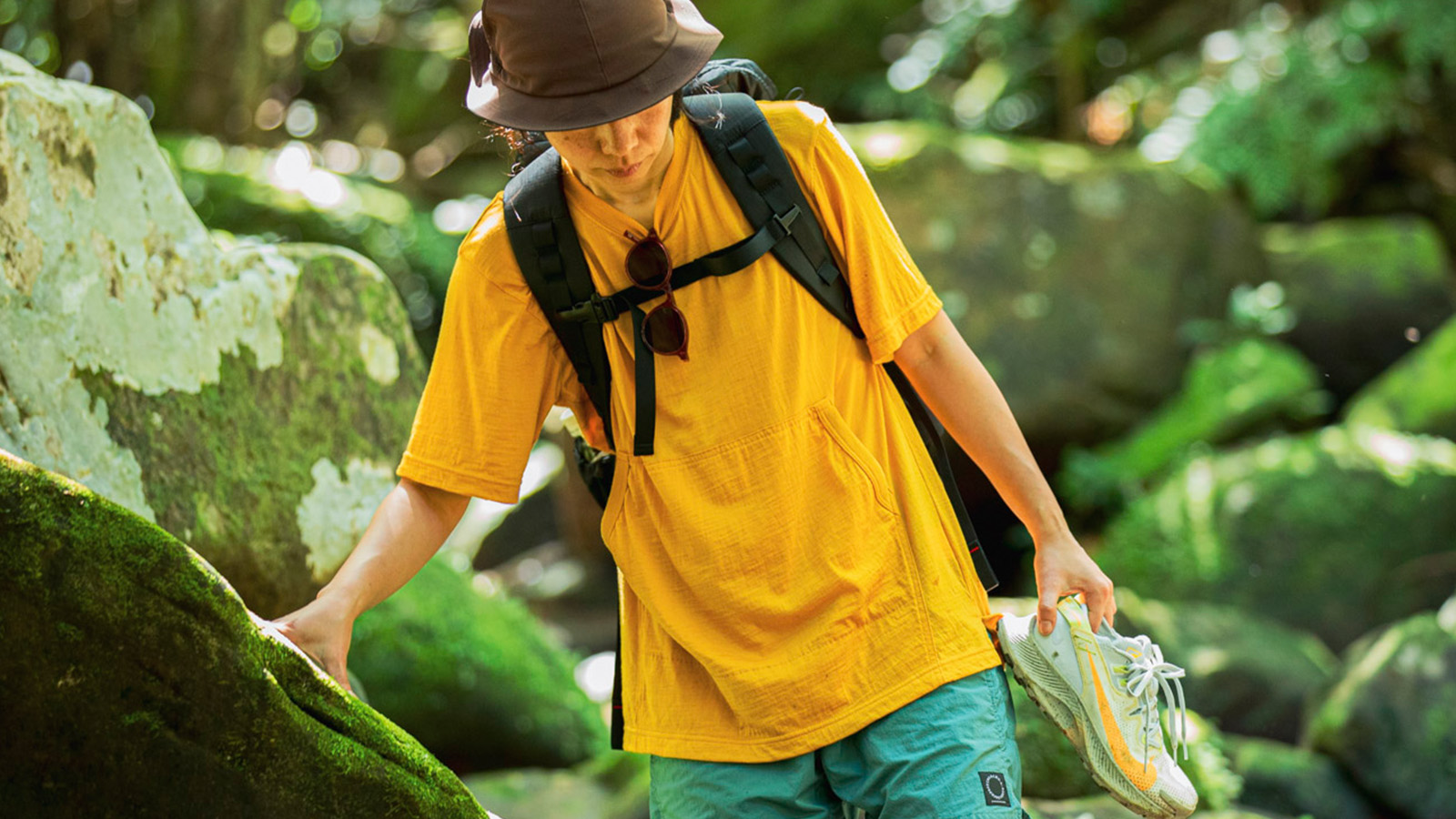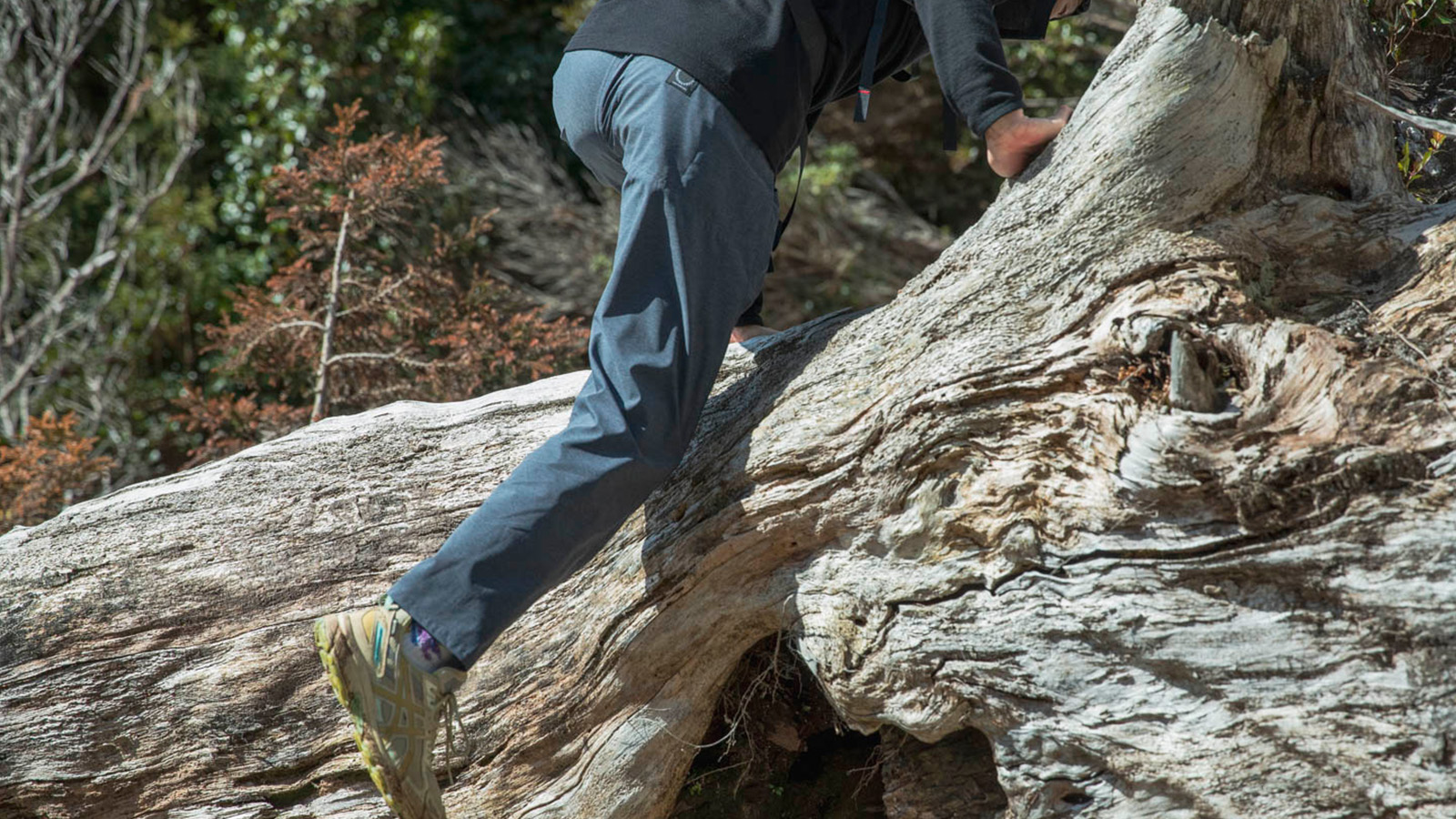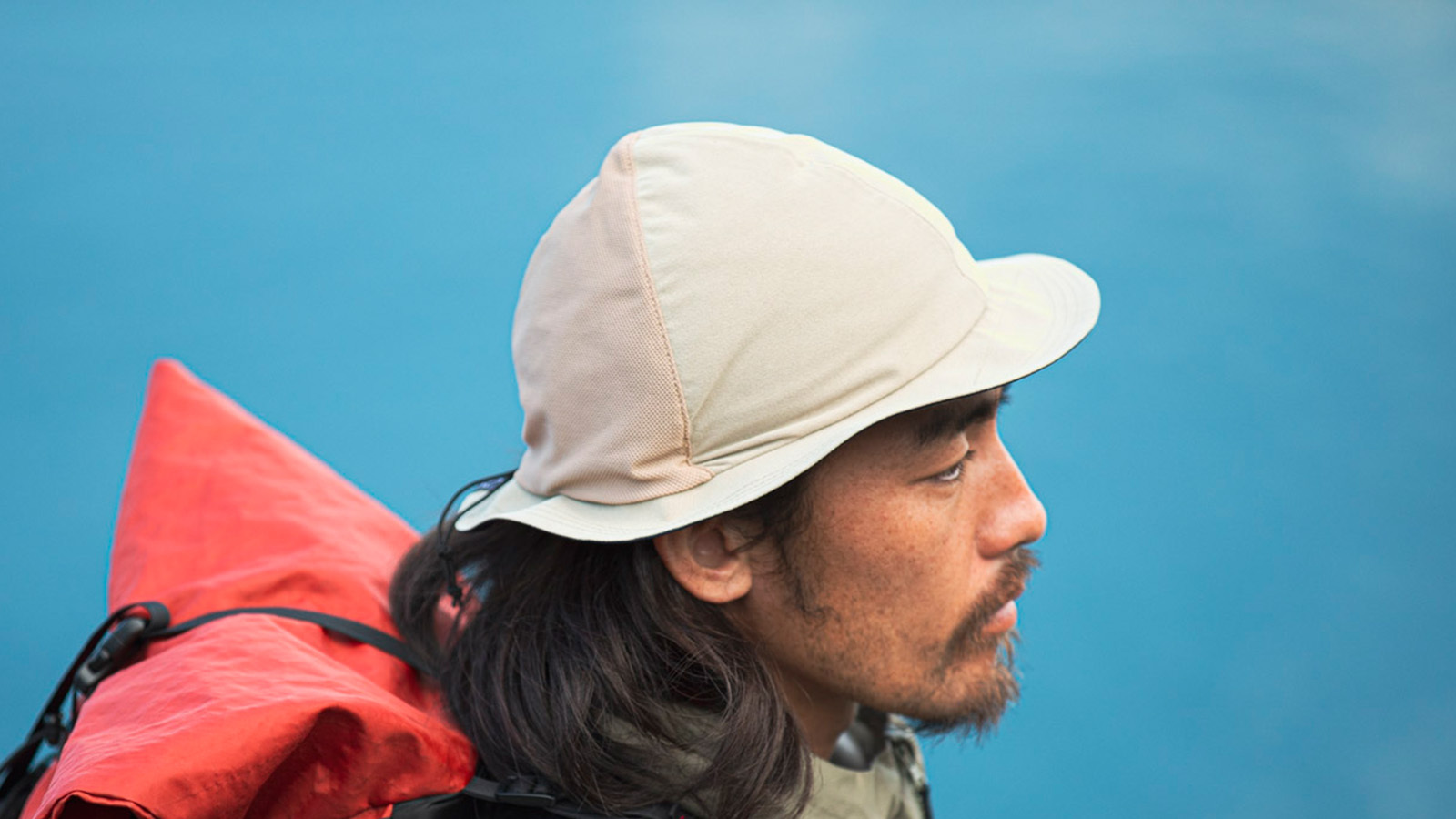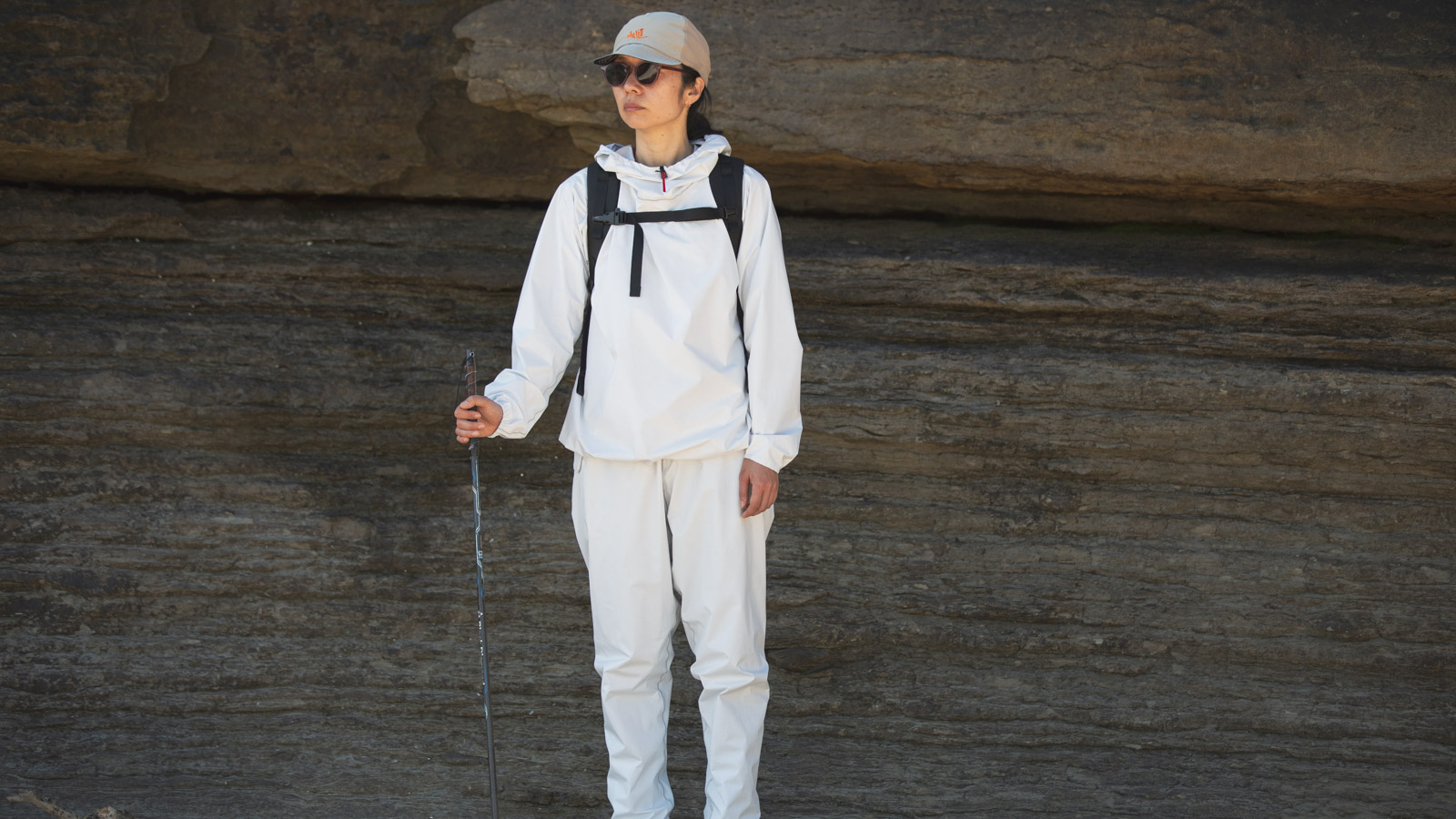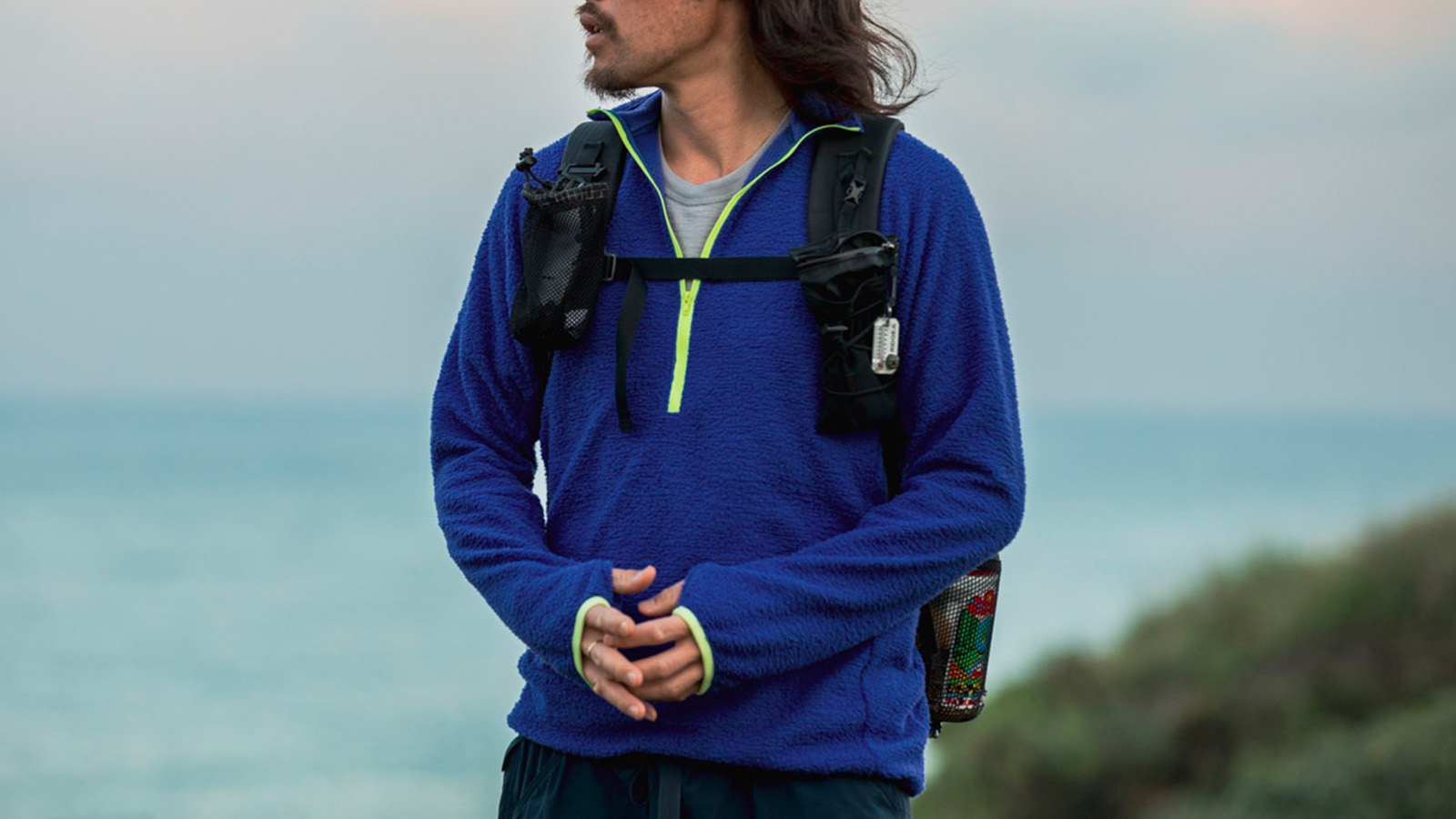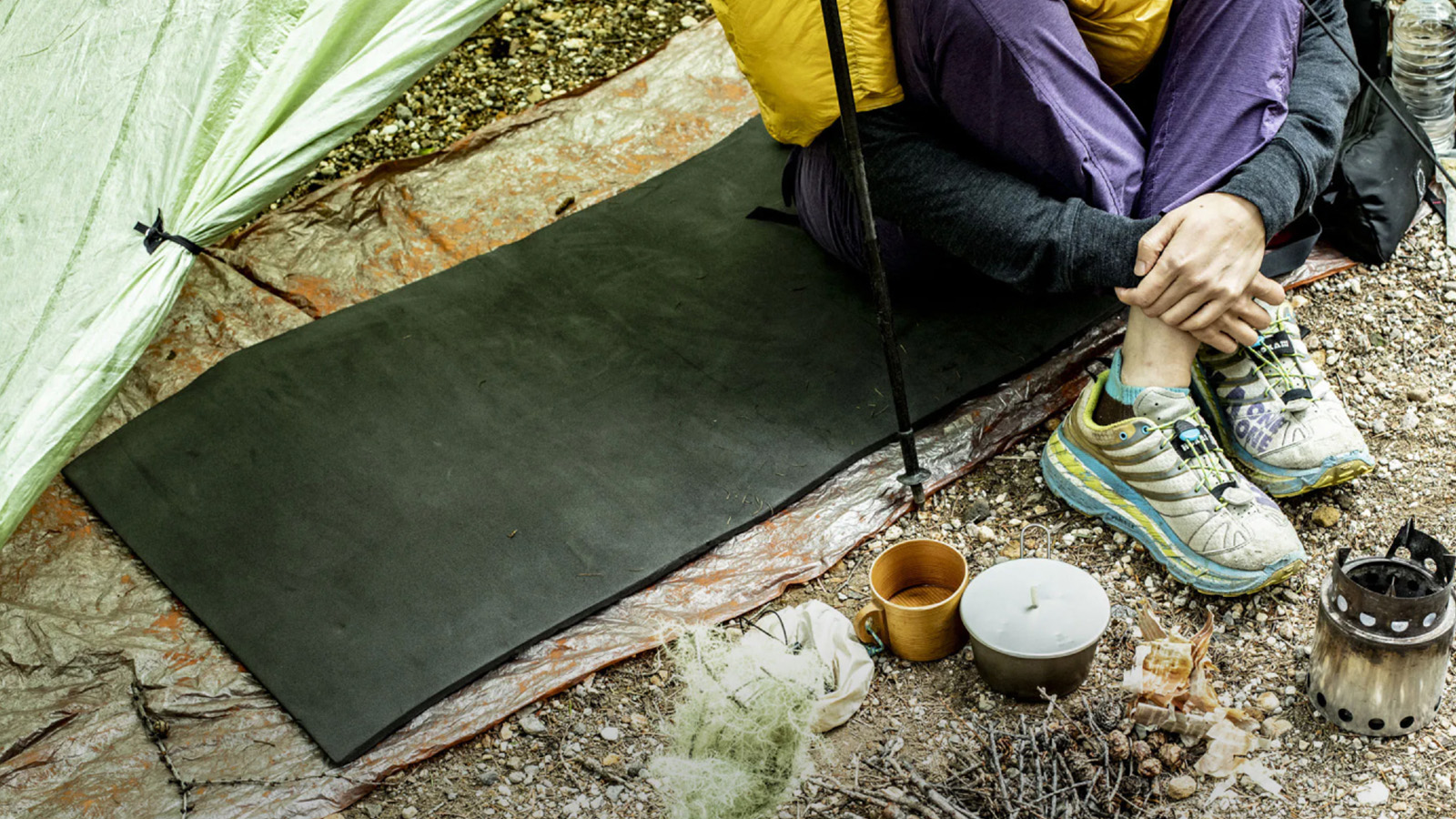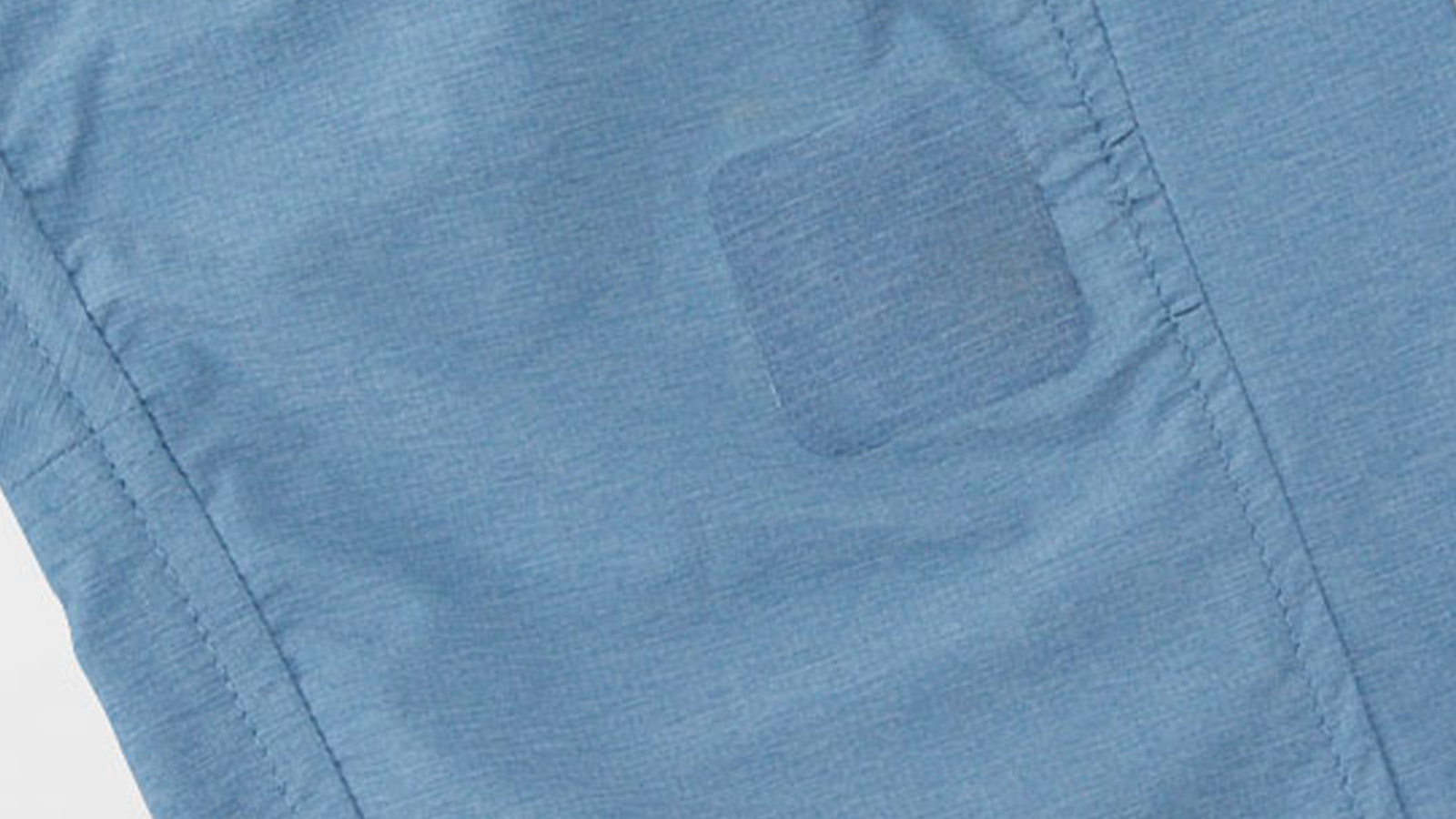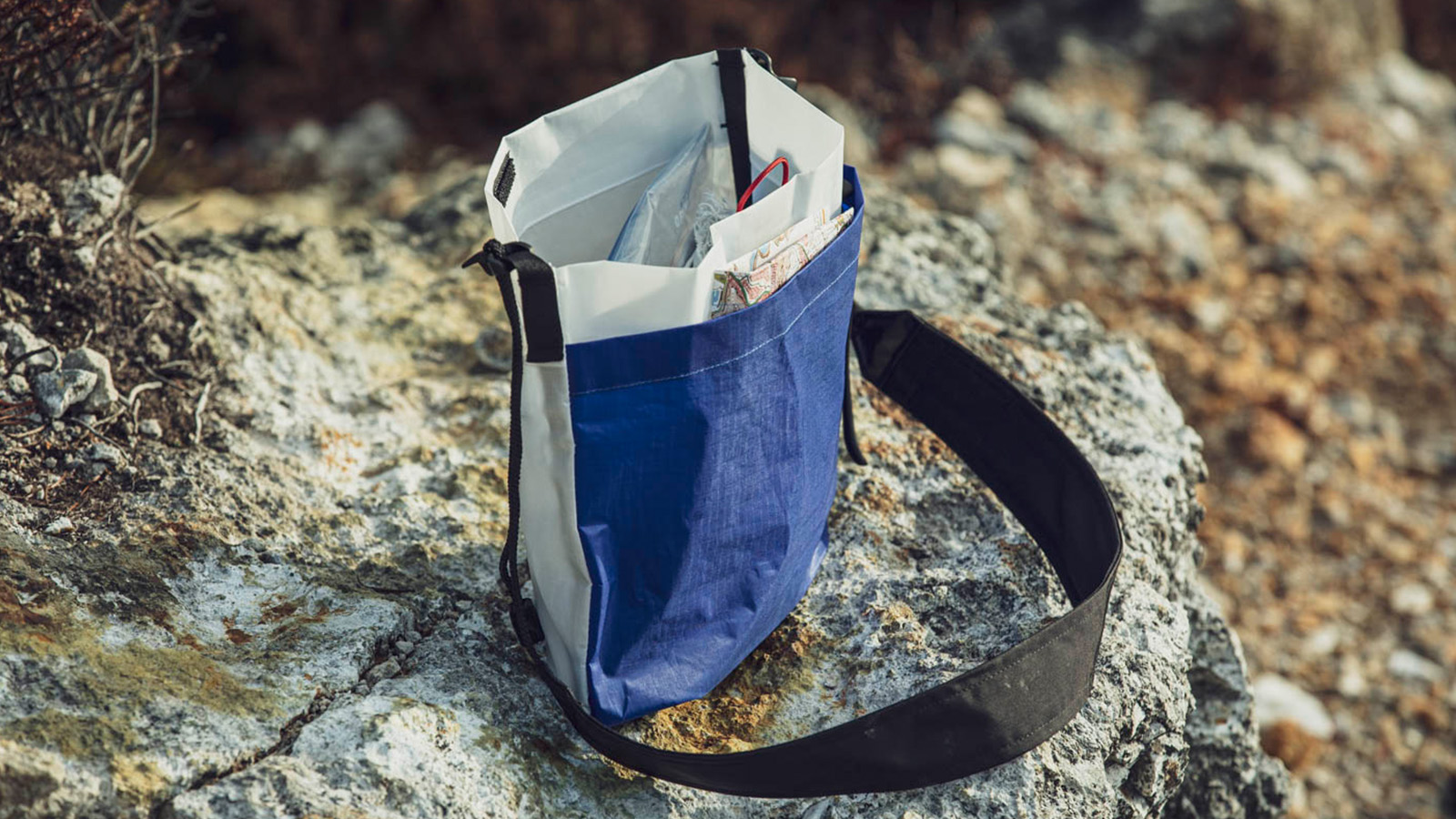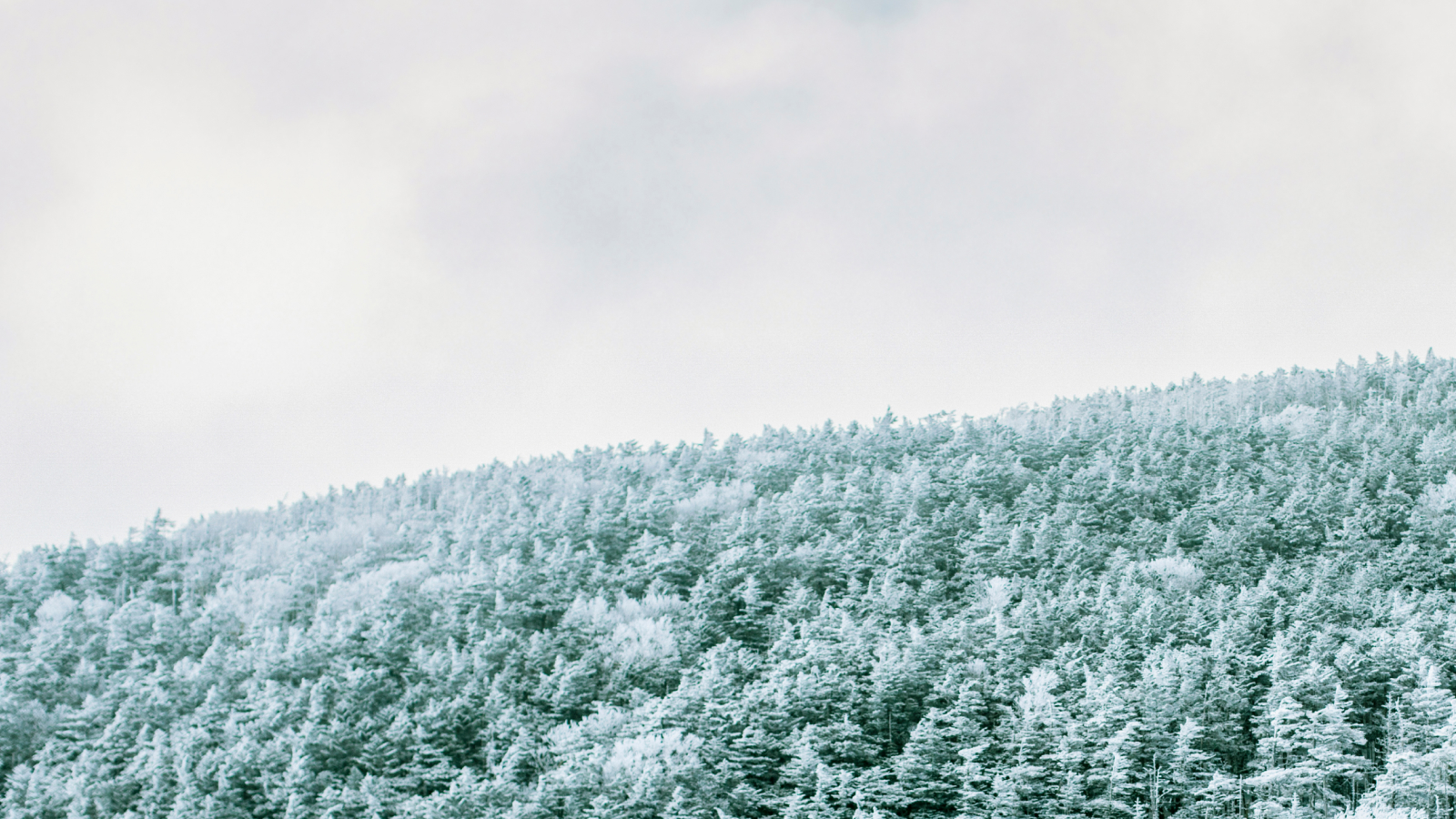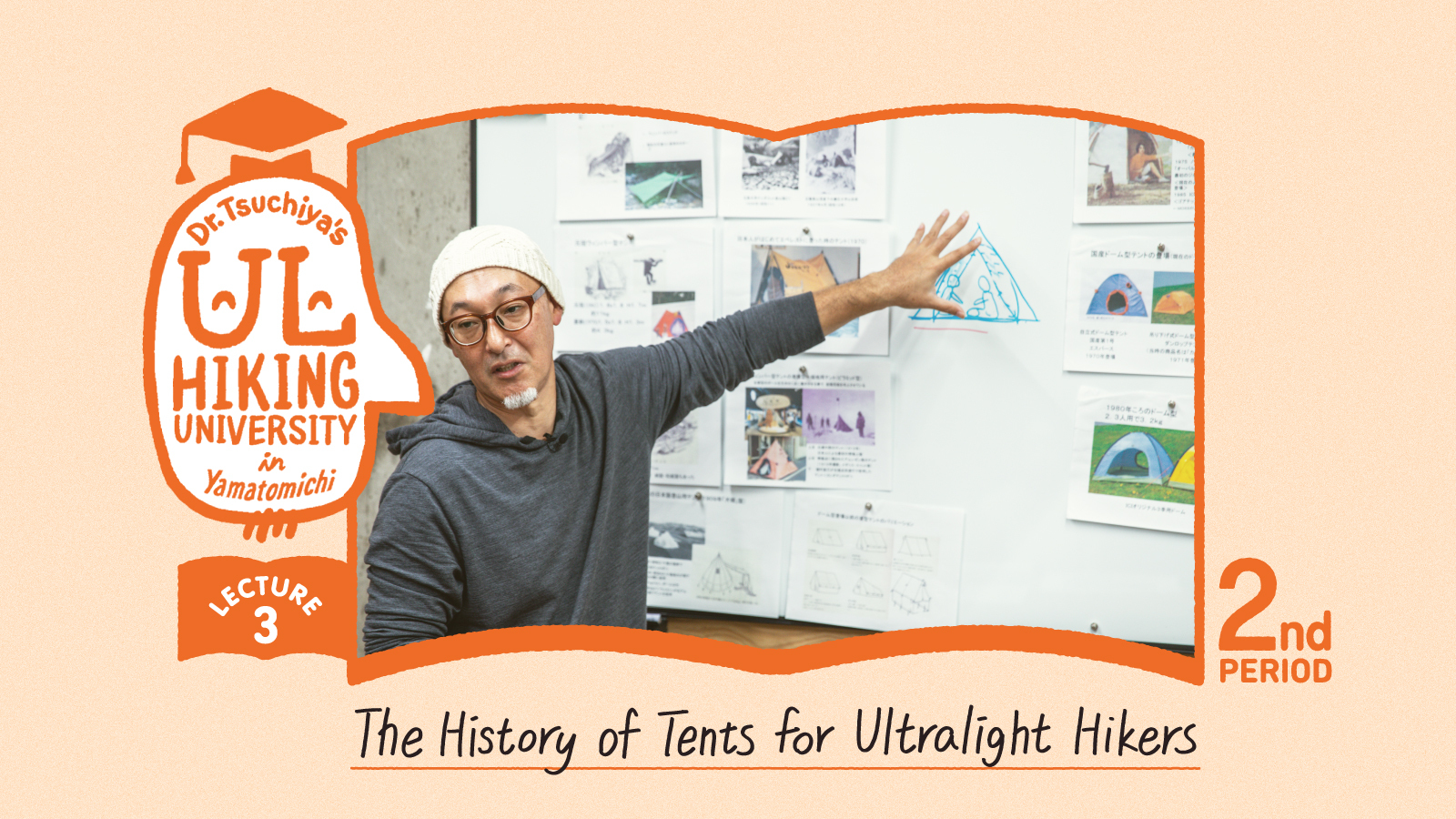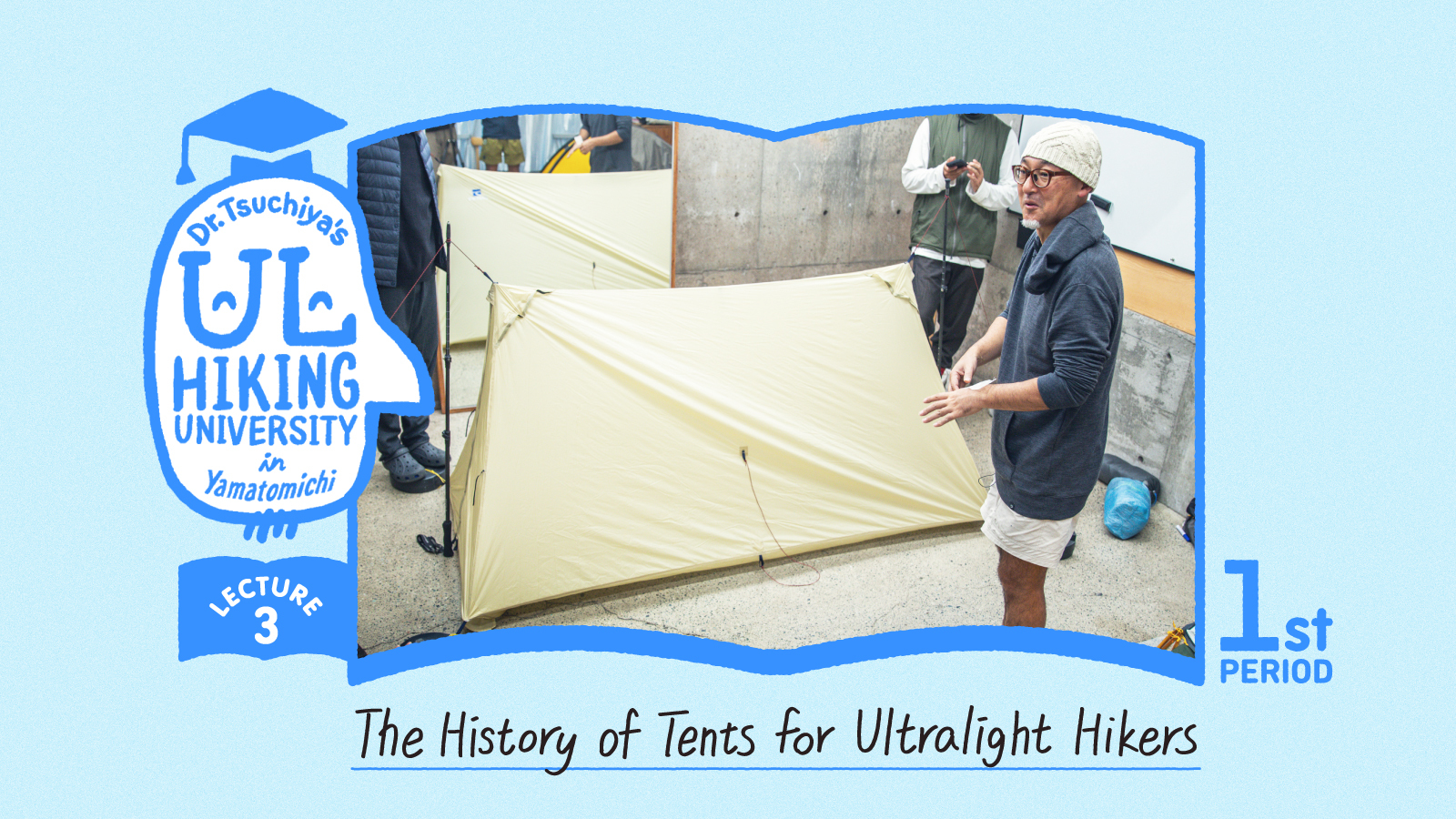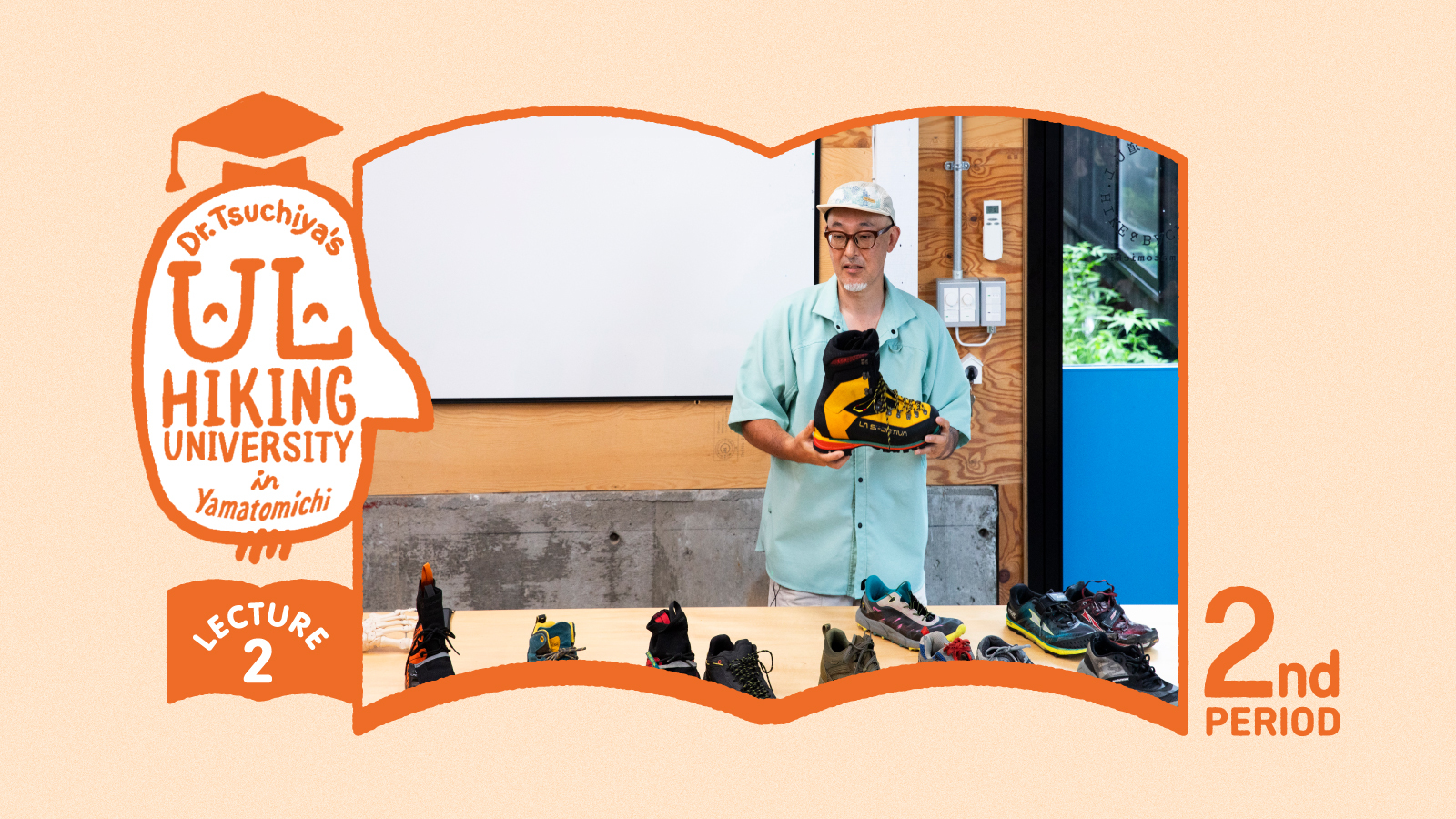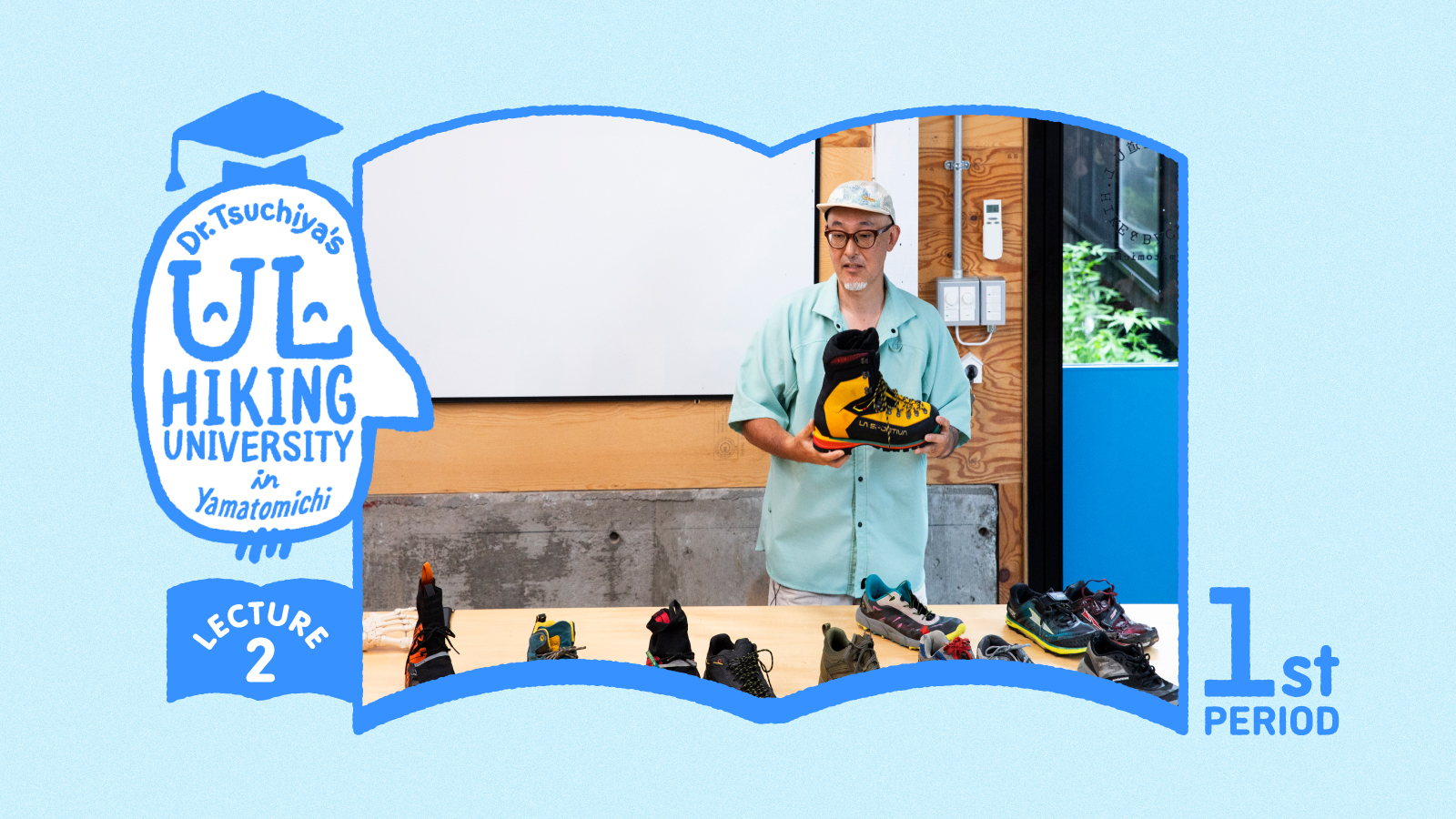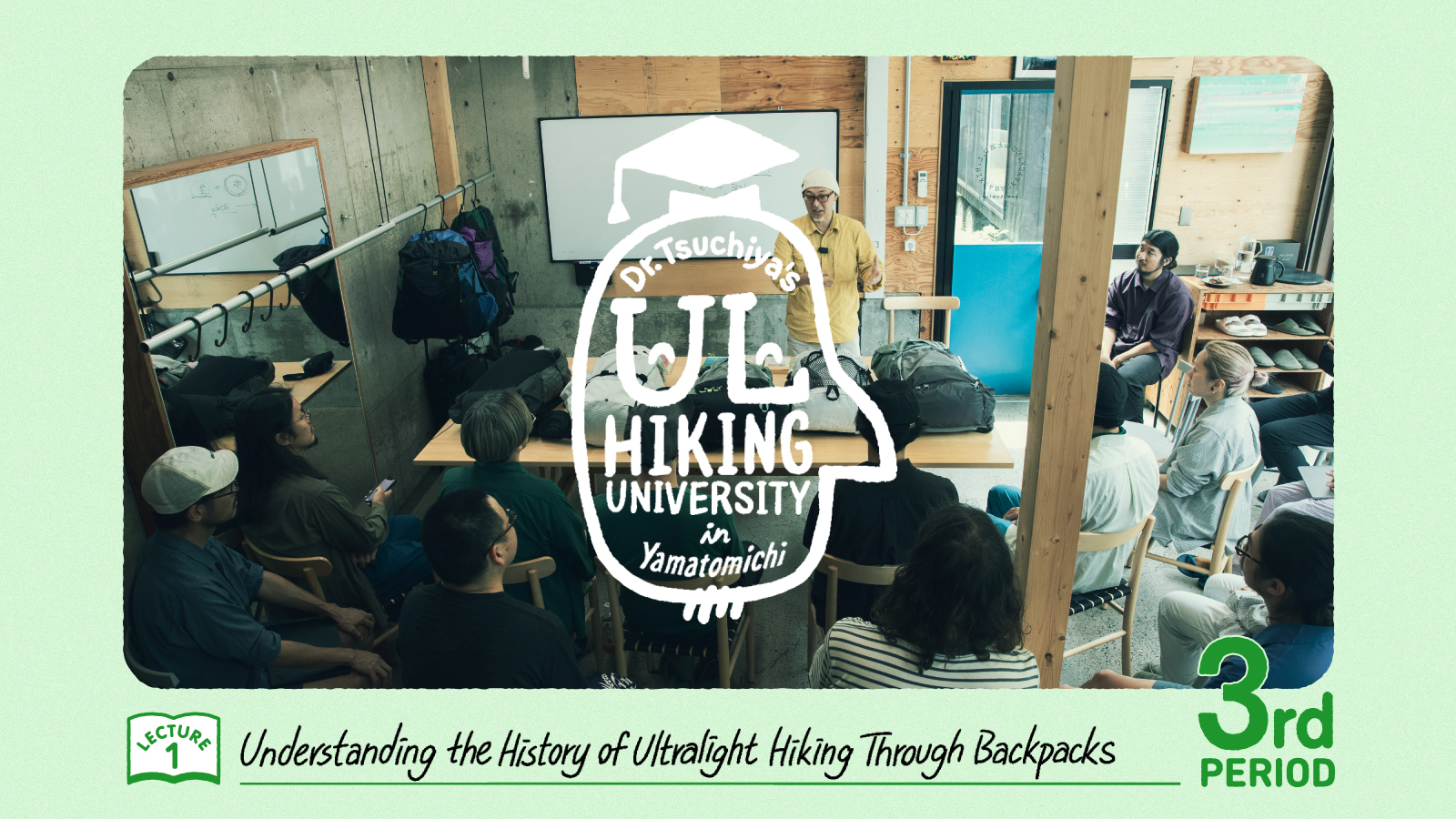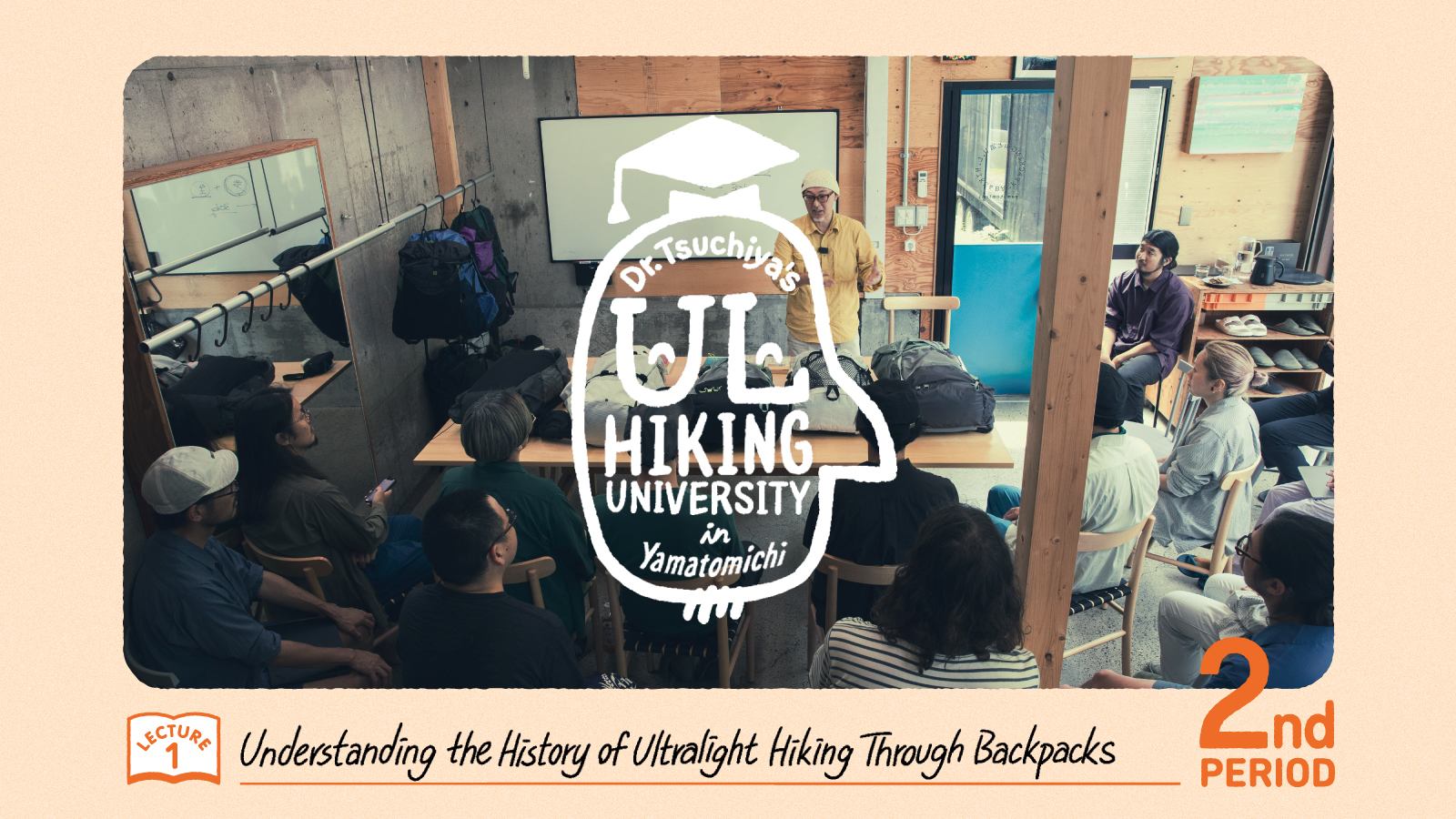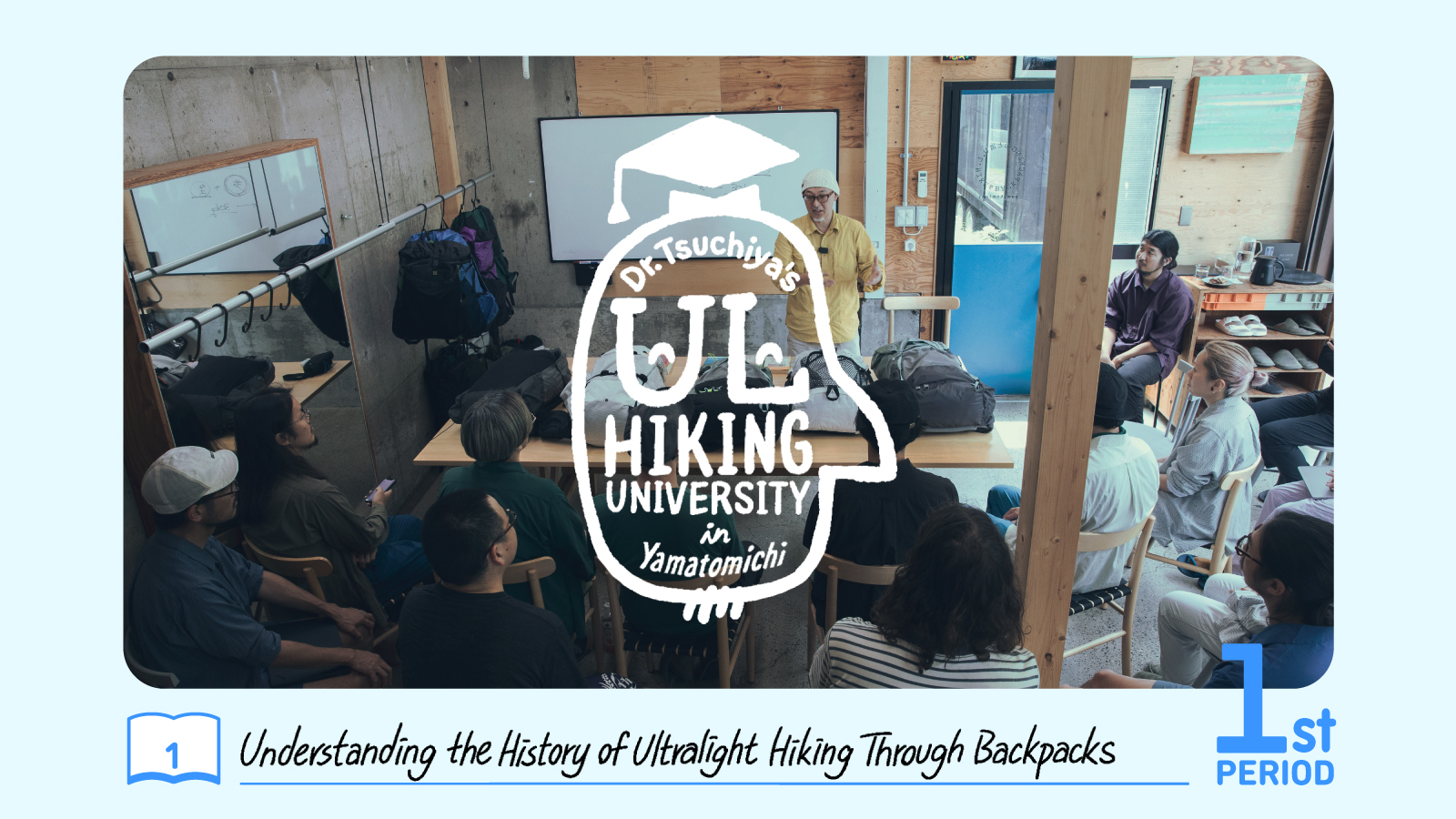Lecture 2: Thinking About Walking ー Shoes
Text: Seimi Rin
Photos: Masaaki Mita
Lecture 2: Thinking About Walking ー Shoes
Text: Seimi Rin
Photos: Masaaki Mita
Tomoya Tsuchiya, owner of Hiker’s Depot in Tokyo and one of Japan’s ultralight hiking pioneers, is the author of Ultralight Hiking (2011) and a frequent Yamatomichi collaborator. Every few months, Tsuchiya will host a lecture at Yamatomichi’s Laboratory, in Kamakura, covering the history of ultralight hiking and the evolution of its practitioners’ gear, from packs and tents to shoes and sleeping bags. His first lectures explored the birth of ultralight hiking backpacks in the late 1990s; their evolution over the past quarter century; and structural details of backpack design. In this second lecture series, Tsuchiya discusses the evolution of footwear, from mountaineering boots to trail running shoes; shoe structure and design; the mechanics of walking; techniques for avoiding injury; and key considerations for selecting the right shoes.
What’s Important: Walking Form
In the first period, we discussed the history of hiking boots and trail running shoes. Now, in the second period, I’d like to focus on key points to consider when wearing trail running shoes. While choosing the right shoes is important in avoiding injury, it’s even more crucial to understand the shoes’ features and pay attention to your walking form.
The main reason Altra created zero-drop shoes — which have no difference in height between the heel and toe — was to address a problem among amateur runners: wearing shoes with a drop between heel and toe without first developing proper running form, a cause of injuries. In shoes with cushioned heels, these runners often land heel-first, which concentrates stress on the knees and can lead to injury. Altra’s shoes were designed not for running faster but for running with a more natural form that minimizes strain on the body. Altra, founded in 2011, was the genesis of an industry boom in zero-drop shoes.
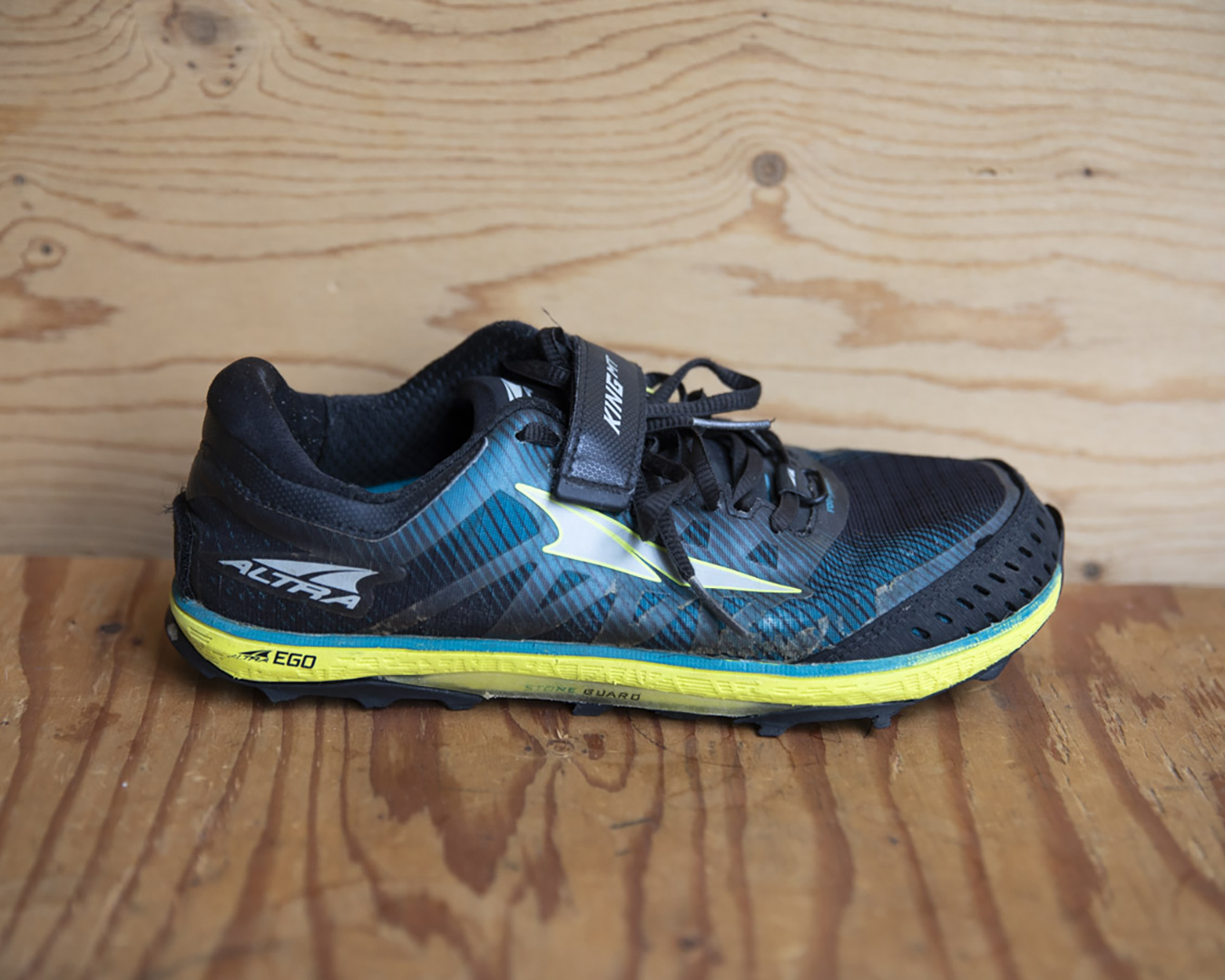
Altra King MT is a zero-drop shoe with equal heel and toe height.
Even before Altra, the UK brand Inov-8 had already been advocating for shoes without a drop that would simulate walking barefoot. But the key to Altra’s zero-drop shoes is not so much a barefoot-like sensation as it is that they focus on promoting what’s known as a neutral posture –– a positioning of your body in which your spine is straight, aligning the pelvis, rib cage and neck –– that allows for movement without straining the body.
When you wear shoes that have a heel-to-toe drop, your body leans forward. It’s similar to the body’s posture when wearing high heels. With your center of gravity shifted forward, your legs naturally move to catch your body before falling. This design increases your stride and can make you run faster. The problem arises when you step too far forward: you tend to land on your heel. This can lead to injuries, especially if you’re running with improper form.
Track and field athletes practice relentlessly, working on their form and building their strength so they’re able to maintain proper running posture even when fatigued. This enhances performance and prevents injury. The same principle applies to hikers. If you experience pain while walking or running on a trail, it’s likely due to problems with your form or muscle balance.
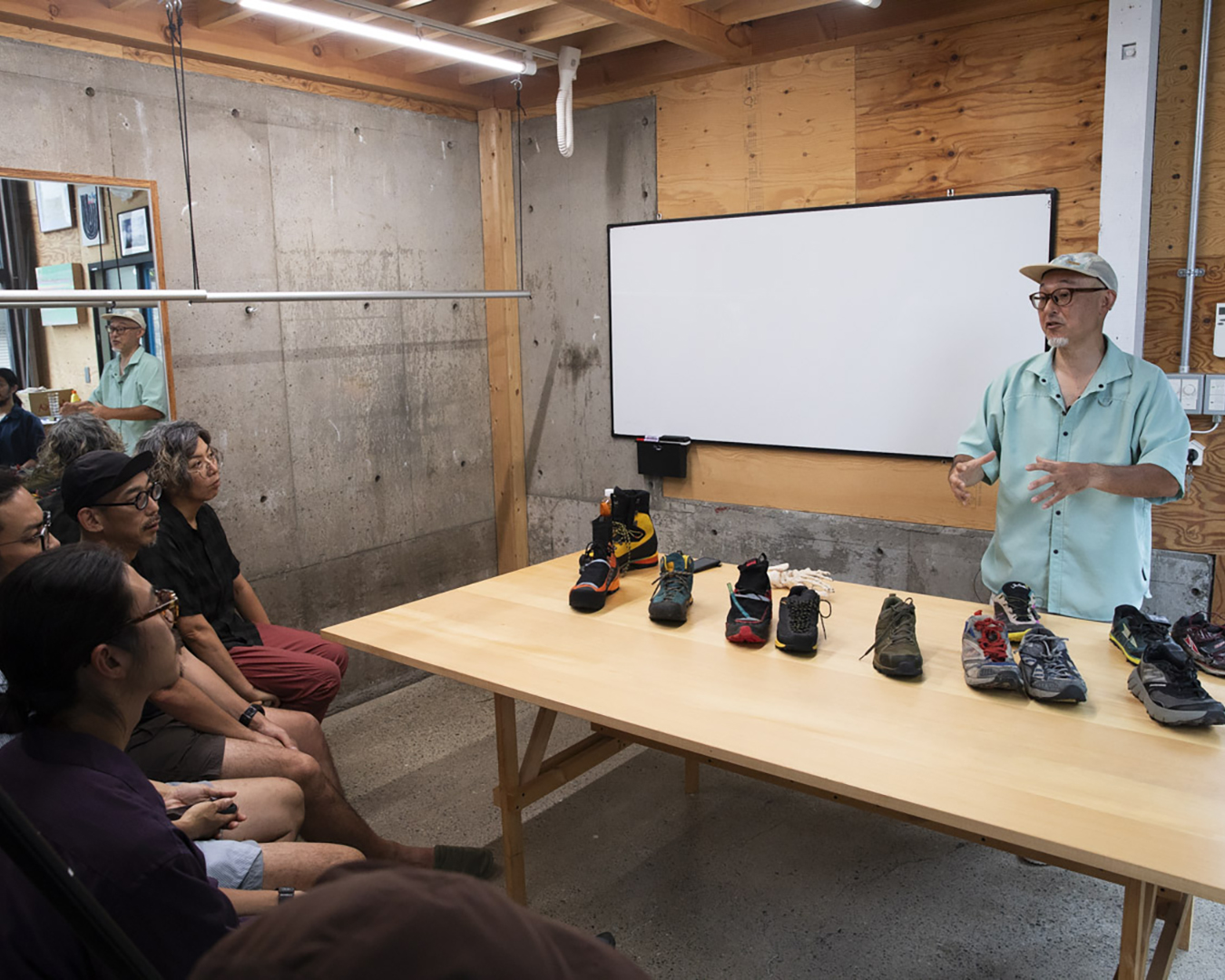
As long as you’ve mastered proper walking form, you can wear shoes with a heel-to-toe drop, regardless of your pack weight. However, if after every hike you are plagued by pain, say, in your knees or ankles, it might be worth taking a break from these kinds of shoes.
Keep in mind that, even when you’re carrying a lightweight ultralight pack, you’re still placing considerable strain on your body simply by carrying a load and walking on a trail. There’s a tendency to blame an injury on shoes when in fact the problem is improper walking form. Many hikers don’t think of themselves as athletes; some might even want to distance themselves from the label. But when you’re hurt, your best option is often to turn to the same resources that an athlete would and get evaluated by a sports trainer.
I’m often asked: Should I use insoles or a brace to avoid injury? Should I use trekking poles? These can help as stopgap measures. But developing a walking form that minimizes stress on the body is the fundamental key to avoiding injuries and enjoying hiking as a lifelong activity.
Trail running shoes feature soft soles. They’re suitable for walking because they allow your joints more freedom of movement. Many people worry about the risk of spraining an ankle in low-cut shoes. It’s possible: Even at times when you think you’re walking with proper form, you might not be.
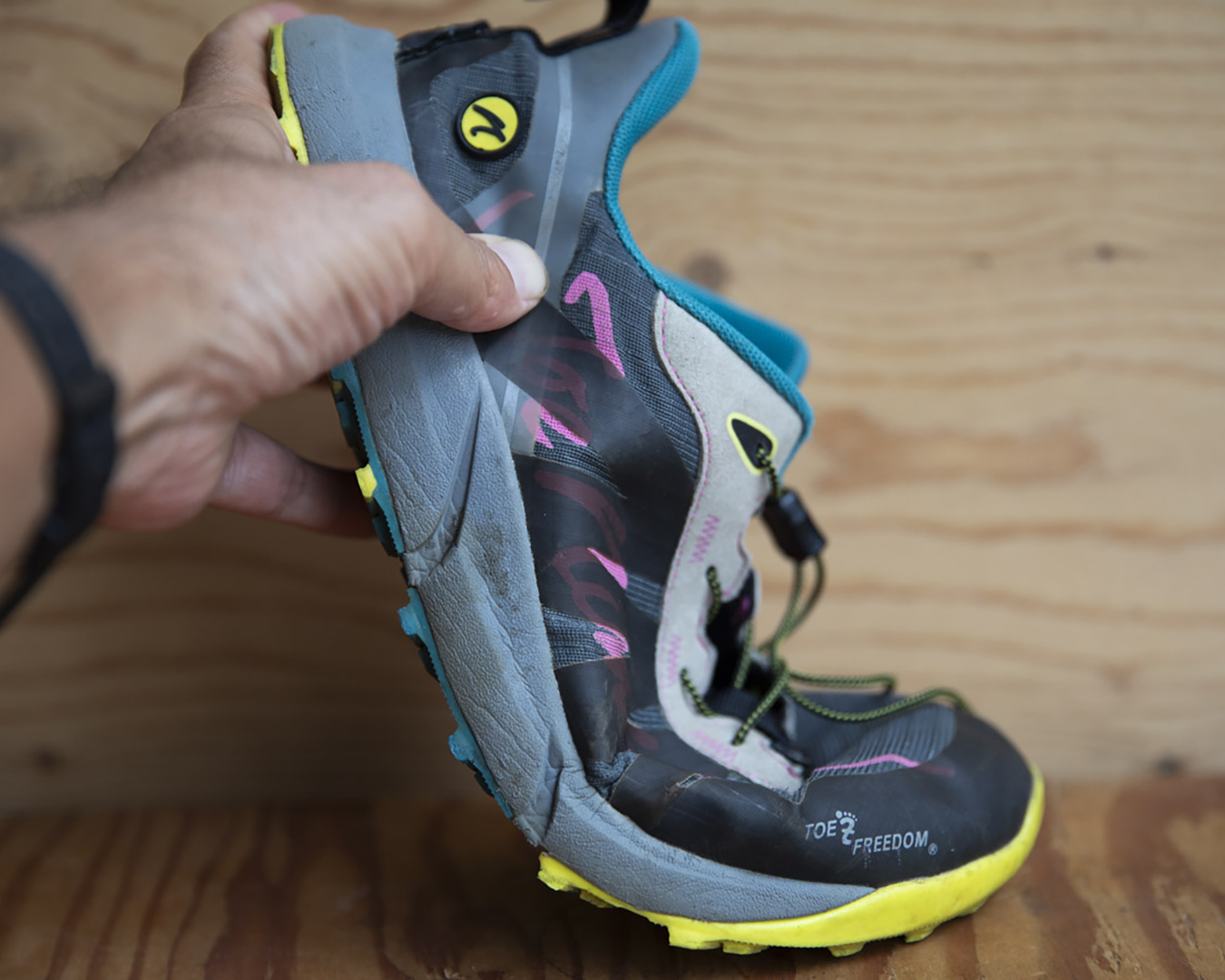
The soft soles of trail running shoes make it easier to maintain proper walking form by allowing your joints more freedom of movement.
You have to be vigilant about body form especially when you’re walking more than 20 km a day and feeling fatigued. Wearing stiffer boots can make walking difficult. Some may try wearing low-cut shoes with stiff soles or mid-cut approach shoes. But the most common choice is a low-cut trail running shoe. Which brings me to this: what to be mindful of when wearing low-cut shoes.
The key foot bone: the talus
The foot has a complex structure: 26 bones and 33 joints as well as more than 100 muscles, tendons and ligaments that all have to work in sync with each other to support weight and movement. What I want you to think about when walking in shoes is the talus. This is a bone that’s located between the tibia (shinbone) and the calcaneus (heel bone). Roughly speaking, it’s the part that we call the instep.
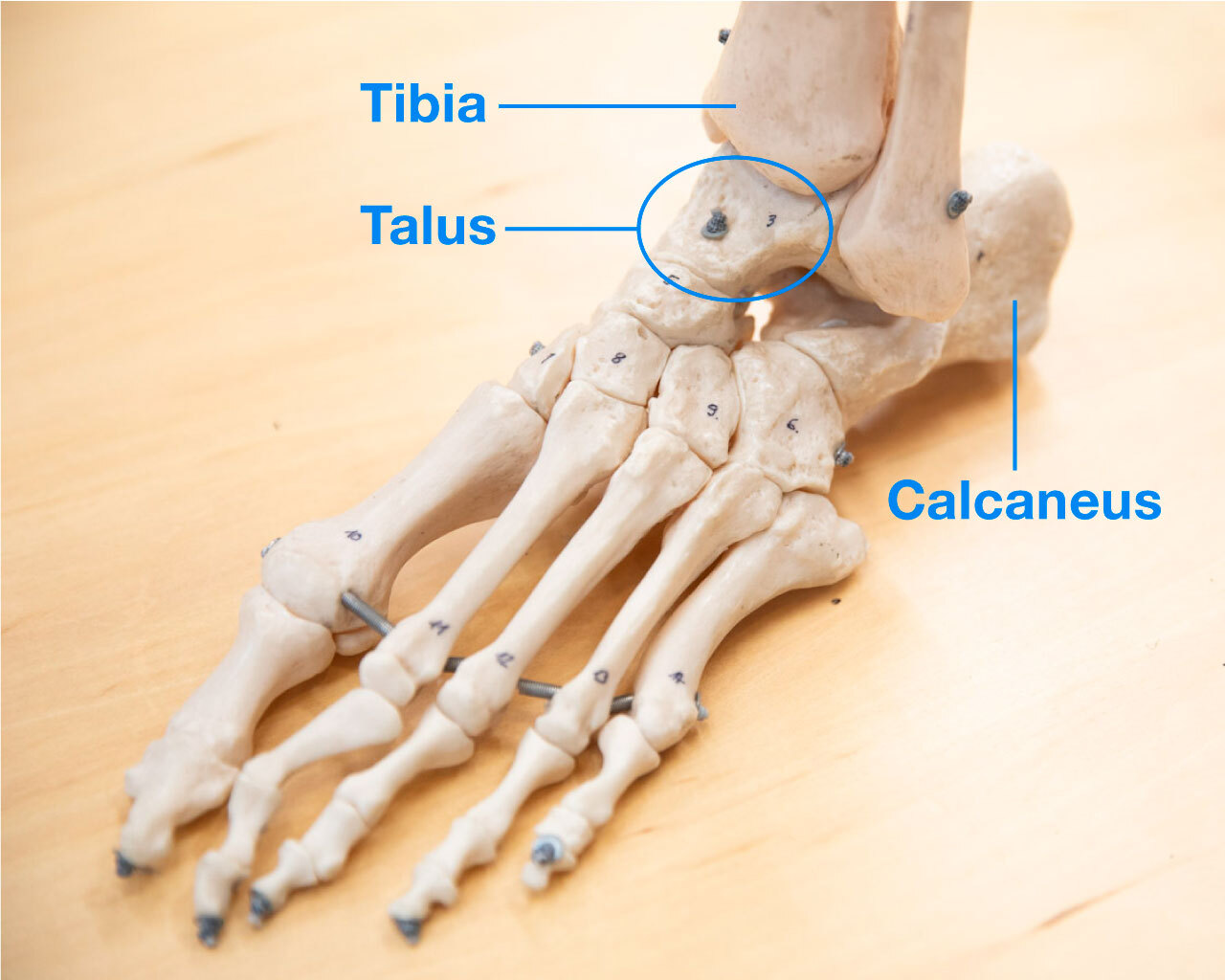
Most of the bones in your foot are attached to ligaments and muscles –– but the talus has no such attachments. The talus acts as the central axis when you’re standing. It serves as the hub connecting the shin bone (tibia), heel bone (calcaneus) and toe bones, and plays a crucial role in various foot movements: the motion of your heel joints, the lifting or lowering of your toes, the inward or outward rotating of your foot.
When you walk or run, the talus moves forward and backward repeatedly. Your foot can become unstable if this backward-forward movement becomes erratic. Keep in mind that this information comes from my having read books and learned from experts, rather than any formal training.
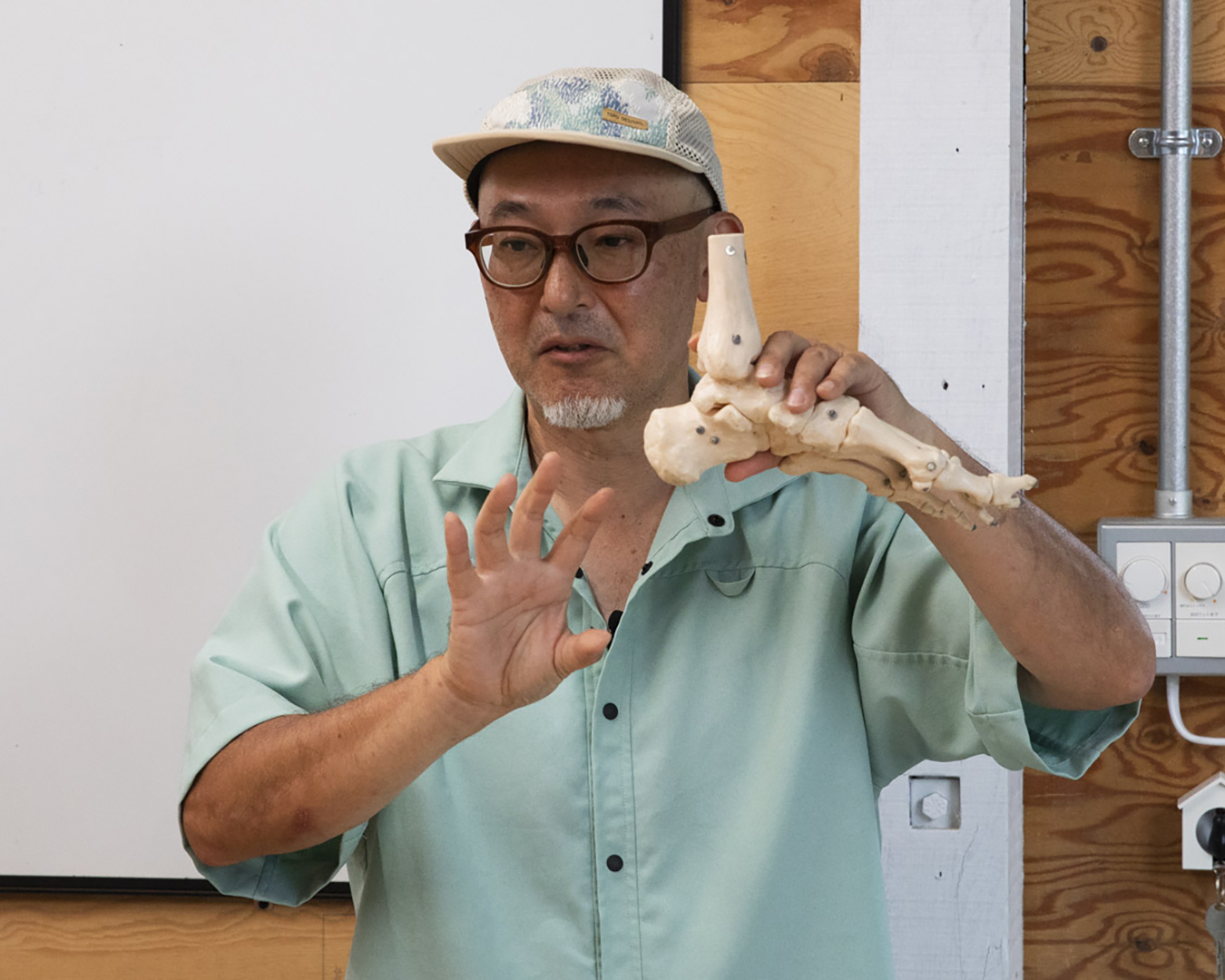
Stabilizing the talus makes the ankle more secure.
Some people say that wearing high-cut boots can prevent ankle sprains because the talus is properly seated in the joint with the heel bone (calcaneus), stabilizing the foot. The key is to prevent the talus from moving excessively. If you can do this –– even when wearing low-cut shoes –– you’re less likely to twist your foot awkwardly.
You may have noticed that low-cut shoes often have an extra, rarely-used eyelet near the ankle. If you tighten your shoelaces to this point, it helps to stabilize the talus, which contributes to more ankle stability –– even when you’re wearing low-cut shoes and even when the forefoot is loose.

Even with low-cut shoes, tightening the shoelaces to the top eyelet can help stabilize the talus. Creating a loop using this top eyelet and threading the laces through –– called a runner’s loop –– increases the pressure of the laces and improves the overall fit.
Training your muscles and working on proper walking form is essential when wearing low-cut shoes. But changing how you tie your shoes can also enhance ankle stability. It’s especially worth trying for anyone who struggles with ankle stability while running downhill. I tighten my laces on hikes when I start feeling fatigued, usually later in the day. At my shop, Hiker’s Depot, when we first opened, we even added extra eyelet holes to shoes that didn’t have them if customers asked for this. I’m no expert, so I did wonder if it was the right thing to do.
Hidenori Maehara, a former physical therapist and current Yamatomichi Kamakura store manager: Sprains typically occur when you’re walking down a slope and your ankle is extended and toes are pointed down (known as a plantarflexed position). With your foot in this position, the talus moves forward. Tightening the shoelaces all the way to the eyelets near the ankle has the effect of preventing the talus from shifting forward. When walking up a slope, your ankle is bent and toes are pointed up (known as a dorsiflexed position). This locks the talus into the joint, making sprains less likely. The key to preventing ankle sprains is to tighten the shoelaces during descents. At the same time, I believe it’s better not to have your shoelaces as tight during ascents. Although tighter laces won’t limit your ability to bend your ankle, you might feel excess pressure on the top of the foot, so loosening the laces might feel more comfortable.
Tomoya:Thank you for that. I believe many specialty mountaineering stores recommend loosening the laces on high-cut hiking boots on uphill slopes.
Bottom line: If you’re wearing trail running shoes, be sure to stabilize the talus. Trail running shoes, with their flexible soles and greater ankle mobility, are well-suited for hiking during snow-free seasons. This is especially true for ultralight hikers, and is something you can confidently recommend to Yamatomichi customers.
Different Sole Stiffness for Different Hikes
The type of terrain you’re walking on –– well-maintained trails versus trails in need of repairs –– will influence the kind of shoes you’ll need. This difference is more pronounced in snowy or rocky conditions. If you’re ascending and using your toes for footholds, stiffer soles offer better support and help conserve calf muscle strength.
The same goes for climbing shoes. Some climbing shoes have softer soles that provide excellent ground sensitivity, while others are so stiff they feel like they have metal plates inside. Anyone who is interested in ultralight hiking or barefoot-like footwear might assume that thinner shoes will allow your feet to be more sensitive to the ground and are better for climbing rocks. But climbers tend to opt for stiffer shoes when navigating tiny, precarious footholds. If the soles are too soft, the heel drops and energy is lost. Unless you have enough toe strength to prevent energy loss, stiff-soled climbing shoes are generally more effective in rocky areas.

Stiff-soled shoes are ideal for climbing rocky terrain because they give you better grip with your toes on small footholds.
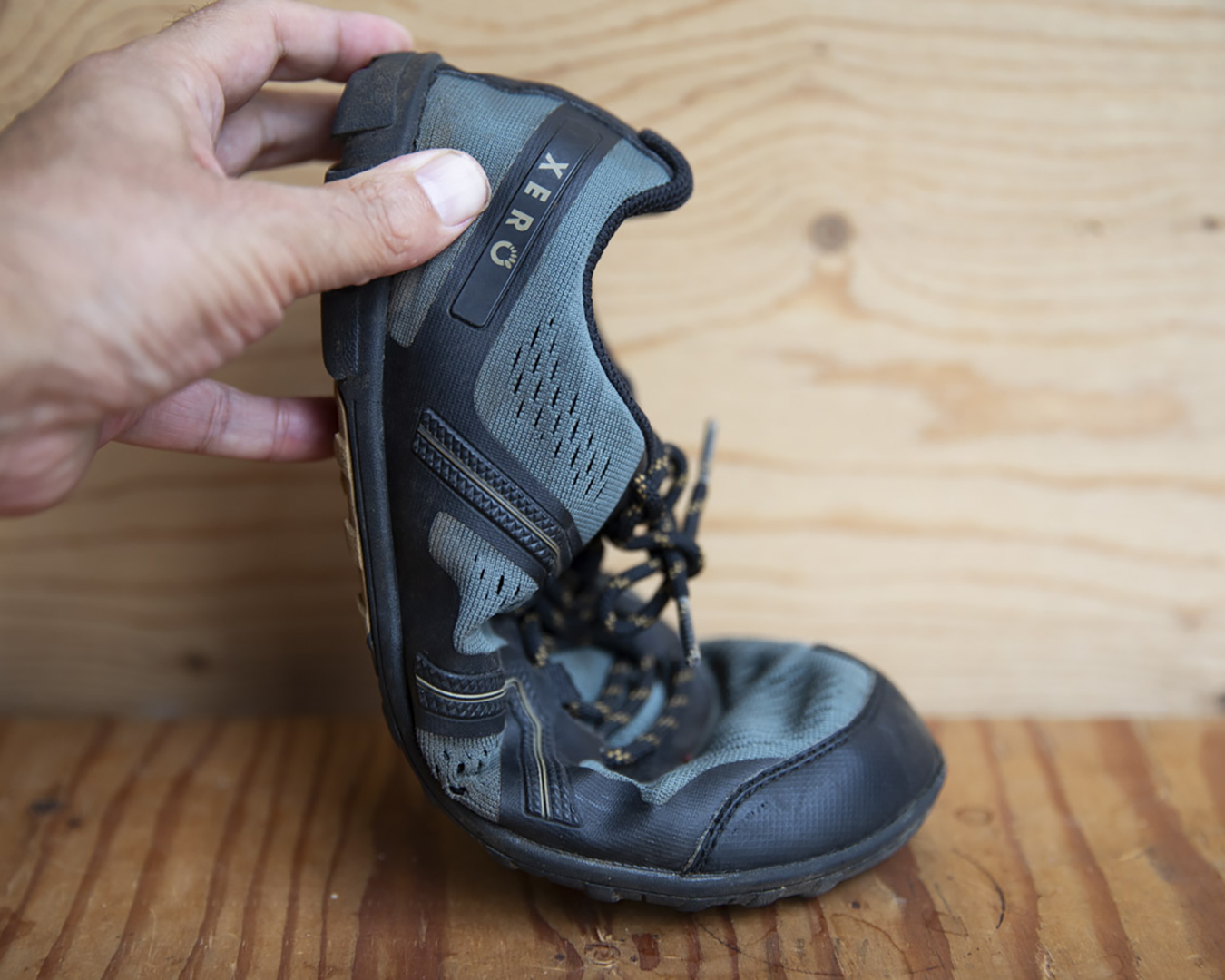
Shoes with softer soles require stronger toe muscles.
The same principle applies when walking on snow. On trails, you might come across slopes with loose gravel or pebbles. Your feet might slip with each step, making the climb exhausting. On snowy paths, if you’re wearing soft-soled shoes, you will lose energy when pushing off with your toes. Stiff-soled shoes will significantly reduce the fatigue –– and will also let you go farther without needing added traction from chain spikes or crampons. That’s because, with stiff soles, the push-off force in your foot is concentrated on your toes, even when your heel lifts. There’s minimal energy loss and you maintain a firm grip on the ground.
In the 2000s, when I got into ultralight hiking, I experimented. When trekking in snow, I tried to go without winter boots. I wore wet socks, trail running shoes and over-boots. Mine was a generation that tried pushing boundaries. I found that it was impossible to increase the warmth and rigidity of trail running shoes enough for winter mountain trekking. And if something went awry when conditions turned for the worse, it would be hard to cope.
When walking on snow, creating friction with the sole of your foot is vital to maintaining stability. In softer-soled shoes, you push off with your toes, which makes it harder to achieve this full-foot contact. So, in snowy conditions, I personally recommend stiff-soled shoes or mountaineering boots, regardless of whether your footwear is high-cut or low-cut.
If you typically wear trail running shoes and stiff ankle support feels too restrictive, you might try alpine boots with stiff soles and soft ankle support. These often come with built-in gaiters for snow trekking.
In Japan, you’ll be fine hiking in trail running shoes on trails such as Akadake or Ioudake on the southern side of the Yatsugatake range or the Northern Alps. For customers with concerns about wearing trail running shoes, low-cut shoes with stiffer soles are an option. For hikers who tackle the Northern Alps or rocky ridges in trail running shoes, minimizing pack weight is probably a priority. Yamatomichi users tend to carry packs weighing between 8 kg and 12 kg. At your stores, it’s helpful to present customers with several options for shoes, so you can point them to the one that fits their needs.
Barefoot Shoes: Caution
In recent years, I’ve been frequently asked whether it’s a good idea to strengthen the feet by wearing barefoot shoes. It’s possible to hike the Northern Alps or rocky ridges in barefoot shoes if your feet are trained for it. Barefoot shoes provide minimal support, and for some people that can be tiring or painful. The sensory receptors on the soles of your feet allow you to detect subtle differences in terrain; they also make you sensitive to pain.
Wearing barefoot shoes as a form of training is fine. But there are people who wear them despite the pain they might be feeling. Their thinking is that the pain is part of the training.
But be wary of pain on the soles of your feet. It can make your body overly tense. Excessive stimulation on the soles of your feet can also make you lower your center of gravity, as if you’re bracing yourself, a posture that’s not great for walking. And yet some people push through the pain. This can lead to pain in the knees, ankles, etc.
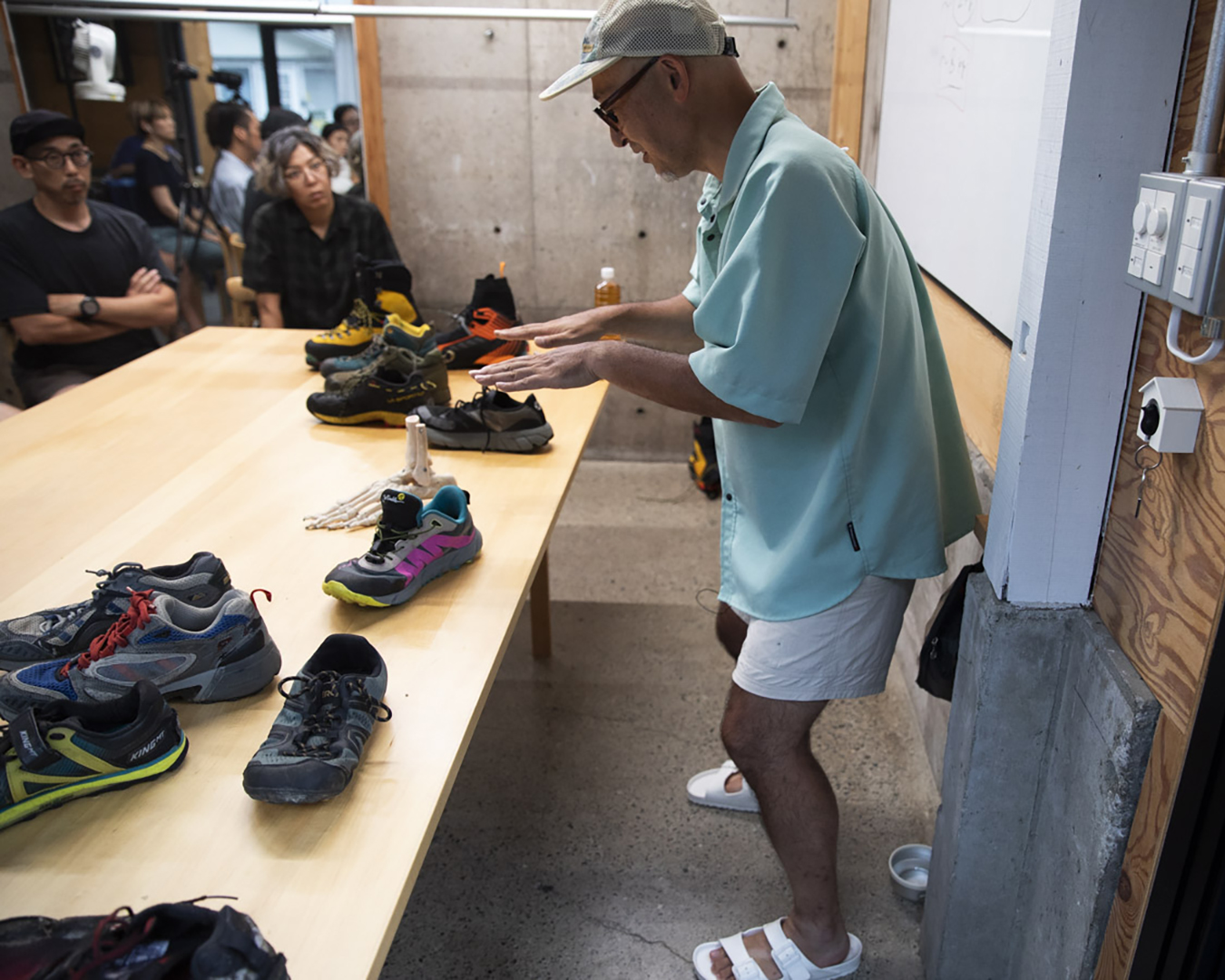
If you tense up while hiking for an extended period, you can experience problems in different areas of the body.
If you’re in pain during training, it’s a sign of too much strain. If customers come to you with this kind of concern, you can suggest that they temporarily switch to regular shoes, which will help their body relax. Or you might refer them to a trainer who can help.
In my opinion, ultralight hiking involves building endurance and strength. Most ultralight devotees aim to use simple gear that enhances their body’s potential. But in extreme cases, they might overdo things and overexert themselves. This can lead to serious injuries. It’s important for us to intervene and prevent this from happening. At our stores, we can help our customers be mindful of listening to their bodies when something is off –– and we should be doing this for ourselves as well.
Q&A: Role of Insoles
Tomoya:Do you have any questions?
Q: When I buy shoes at a store, the staff often recommend insoles. If I were to use firm insoles, would it have the same effect as wearing shoes with harder soles?
Tomoya:In general, mountaineering stores recommend two types of insoles. One is for cushioning and the other for arch support. Arch support insoles –– particularly those that prevent the talus bone from collapsing –– are the most common.
Arch support insoles help your feet to distribute the weight of your body and your gear. When the arch has proper support, the foot can push off with more force. These insoles usually have a plate inside, so the sole of the shoe feels harder –– but that’s just a secondary effect, not the main purpose.
Q: If I add arch support insoles to zero-drop barefoot shoes, will that negate the effect of having no heel-to-toe height difference?
Tomoya:Good question! Most arch-supporting insoles have a higher heel. Adding these to barefoot or zero-drop shoes will shift the balance of the shoe’s original design. But there are arch-support insoles that are specifically designed to maintain the zero-drop effect.
Japanese brand Hoshino makes arch support insoles without a higher heel. Personally, I think using zero-drop arch support insoles can be a good way to enhance the fit and stability of zero-drop shoes. Not so with barefoot shoes, however, since the aim of wearing these is to improve the body’s natural abilities. Adding insoles would likely have the opposite effect.
Think of insoles as a secondary tool. When some people stand, their arches collapse and their foot size can change by as much as 5mm. For them, arch support insoles would be uncomfortable. Ideally, when using insoles, you should feel a slight push behind the arch where the talus is supported. You’ll feel more stability –– less arch strain –– even after walking all day. If, after a day of using insoles, you feel pain, you should change the arch support or consult a foot specialist about insoles.
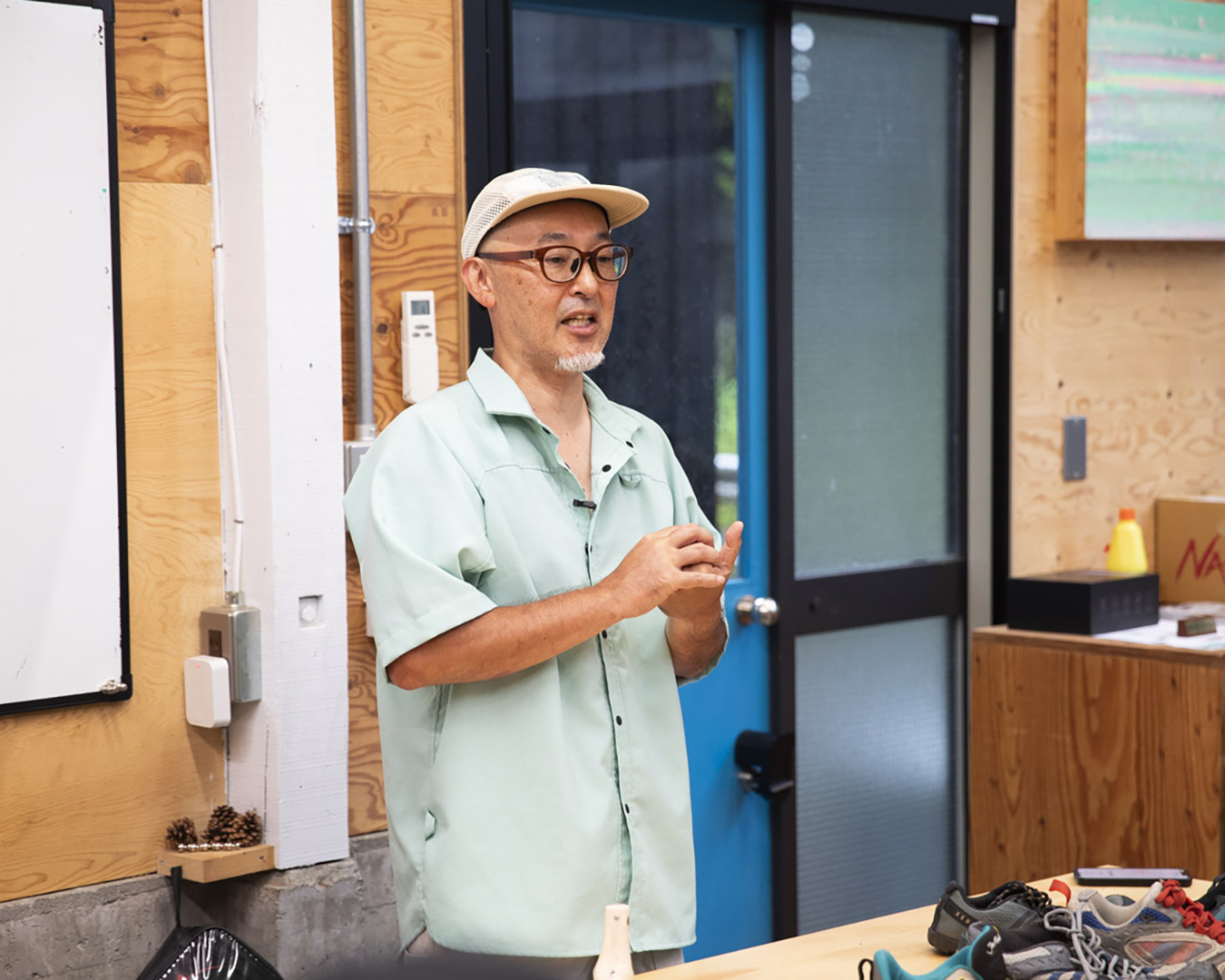
Q: Is it a good idea to insert support insoles just for rocky ridges on a long hike, and remove them on other sections?
Tomoya:I think that’s fine. But I recommend doing this only if you’re not comfortable hiking without support insoles. My personal belief is: the simpler, the better. Don’t overcomplicate things. It might become a hassle or a source of anxiety, if you forget to swap the insoles. That said, carrying insoles and inserting them when you need more stability might be a practical solution for you.
What’s best is if you can confidently hike rocky areas while relying on leg strength, even in soft-soled shoes. You should be aware of times when you feel uneasy wearing low-cut shoes. Make a habit of thinking about these things. The uneasiness might mean that you’re not ready to use them for certain terrain or situations. You’ll need to focus on confronting your weaknesses and building up the necessary skills or strength, rather than relying on gear. That’s the ultralight approach.
Hidenori Maehara, a former physical therapist and current Yamatomichi Kamakura store manager: In the physical therapy field, insoles are thought of as a form of support. For specific points during a hike –– when you really want to protect your ankles –– it’s fine to use them. Always relying on them means that you’re constantly supporting your arch. This can weaken unused muscles and compromise muscle strength. That’s why physical therapists don’t recommend using insoles all the time, but instead suggest using insoles when you need to relieve pain.
Tomoya:That physical therapist’s perspective is valuable. Outdoor insoles are often marketed as tools to enhance performance, so people think about using them all the time. Hiking is about walking. Ultralight hiking is about walking with a lighter load and using the minimum gear to live in the wilderness. It’s not about walking faster, but about walking farther and longer for a deeper engagement with nature. We don’t often think about something as basic as walking. But paying more attention to how you walk and how that changes when wearing shoes can be revealing and help prevent injuries. And that will make walking more enjoyable.
[To be continued in the Third Period]
06
YouTube
Watch the lecture on video!







